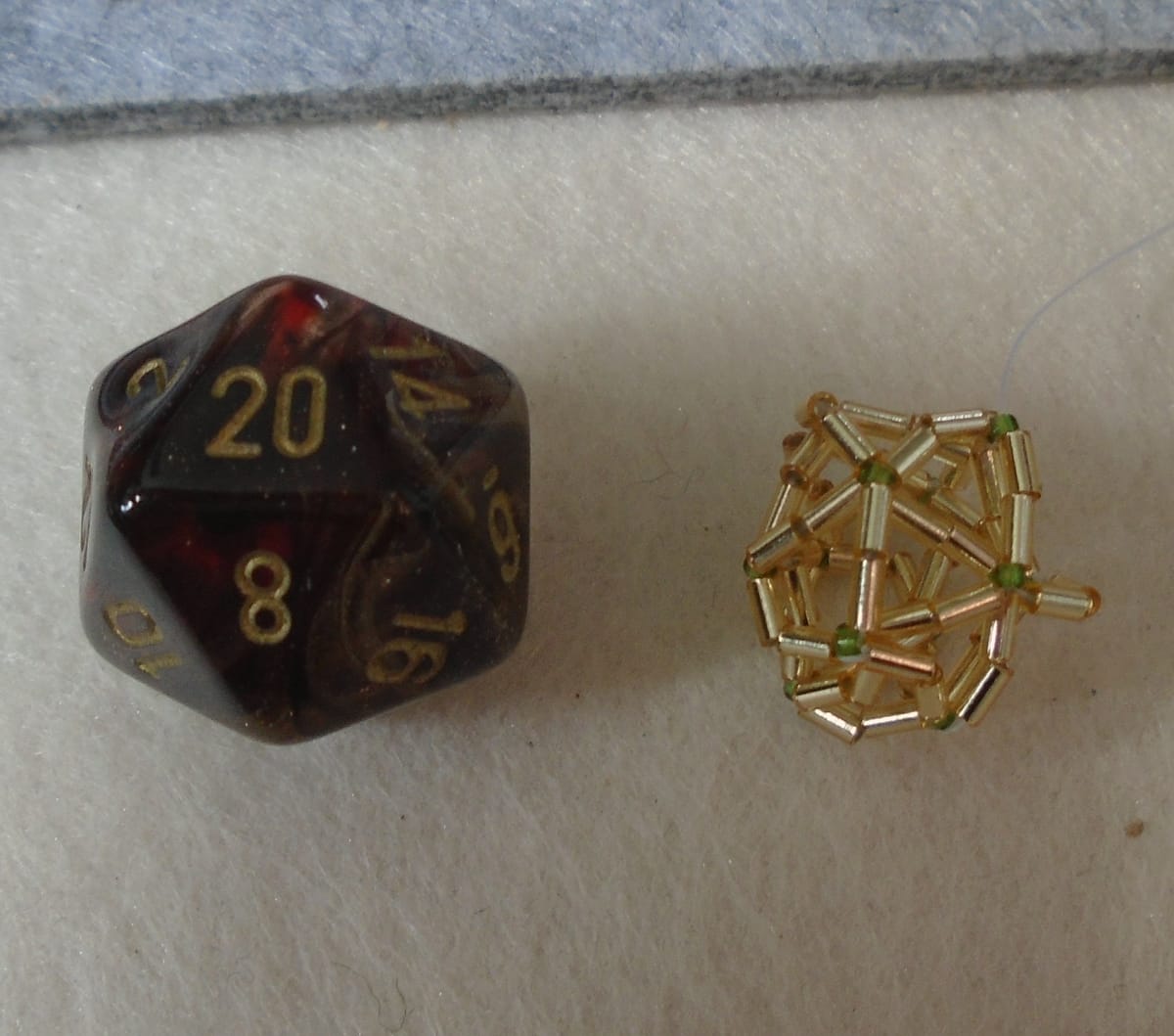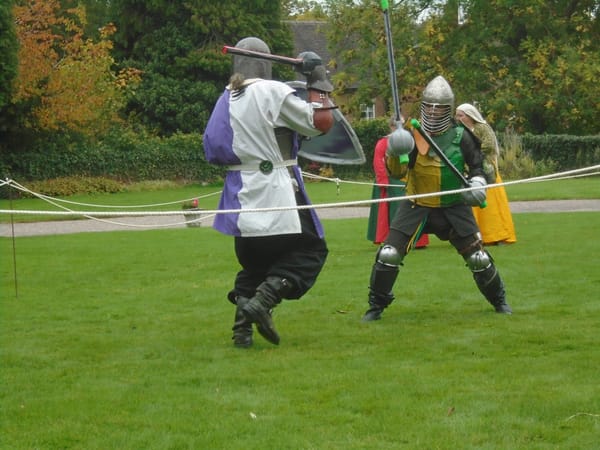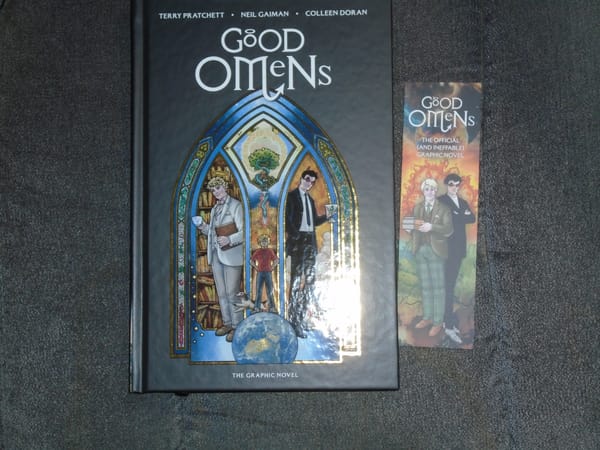Icosa-bead-ron

I have bugle beads now. I bought them for the star earrings; but the star earrings use only 24 of them per pair, and there are hundreds of them in a pack (really they're just like seed beads, but stretched out to 3 mm long). And if you're anything like me, long thin beads are going to give you Ideas(TM).
I'm not just a maths geek. I'm also a roleplaying geek, which means, among other things, I have quite a large collection of dice in the flat. And when I say dice, I don't mean just the cubes you get with board games. I mean this kind of thing:

While all these dice are used in most roleplaying games (other than something like Shadowrun, which works using fairly large numbers of regular six-sided dice), what you might call the classic RPG die is the one in the middle of the photo above - the d20, which is an icosahedron. I have been wanting a pair of d20 earrings for a while, and they do have them on Etsy, but I can't find a pair I like. What most people do is they take a pair of standard-size d20s (like the one in the photo) and fit them up to a pair of earwires. I think that's just a little unsubtle for my taste. You can also get metal ones that are smaller and look more like proper jewellery, but those aren't inked so you can't see the numbers very well, and that's a little too far to the other extreme. What I ideally want is a pair of mini d20s; I don't especially care what they're made from as long as they don't look cheap and they're not too heavy, but I do want the numbers to be visible. I know. I'm fussy. But if I'm going to go round with dice dangling from my ears, I want them to be the right dice.
So I've put actual dice earrings on hold at the moment till I can find some way to make my own (with the proviso that I'm not buying two full mini dice sets just to get the two required mini d20s; if I can't buy them individually I'm not doing it at all). And then when the bugle beads arrived, I thought... well, at least I can make icosahedral earrings, and probably have a lot of fun doing it.
Fun, yes. Actual success, not so far. The first thing I tried was having one bugle bead along each edge of the icosahedron, but even by the time I'd made the initial triangle I could see that was going to be far too small. So my next attempt had a seed bead at each corner, and each edge consisted of two bugle beads with a seed bead in the middle. A bit like Morse code, except that I have no idea what -.- stands for. (Apart from SOS, the only Morse code letter I know is V, which is three dots followed by a dash; if I try to type that, the editor thinks I want italics. I know V because it's basically the rhythm of the first four notes of Beethoven's Fifth Symphony, to which I was heavily overexposed as a child.) I'd built about half the icosahedron before I felt obliged to give up. It looked very pretty, but those seed beads in the middle of each edge were just an open invitation for it to bend in all sorts of directions.
So I very carefully unpicked the whole thing; my beading, like other things I do, is inclined to stay put, so it did not all fall apart when I snipped the thread. Time for Take 3. I reckoned that if I left out that central seed bead and just had the seed beads at the vertices, for one thing it would make it easier to see what I was doing, and for another thing it would be less inclined to bend. A bugle bead is just a very tiny cylinder, and if you butt up the ends of a pair of cylinders and apply enough pressure, they ought to hold together reasonably well.
Well, they ought; but, of course, it's not just pressure you're applying. There are tensions in the strings coming off at various angles. I would really not like to draw the force diagram here, especially since the friction forces involved are quite complicated. As you can see from the feature photo, each seed bead connects five edges, and the thing with a seed bead is that it doesn't have five holes. If it did, it would fall apart. It just has the one, so you have to ensure that all the threads go through it somehow, which means that at times you're bringing the thread through at some interesting angles relative to the edges. This one was at least better, so I finished it because I had a small amount of hope for it; but, as you see, it's still not good. You can't really call that thing an icosahedron. There are only about two straight triangles in the whole shape.
So I went to bed thinking about bugle beads and icosahedrons, and for the life of me I couldn't think how to get one to form the other; but then I had an entirely different idea, also of a somewhat mathematical bent. (It had been partly inspired by seeing some extremely large and ornate earrings online - very much too large and ornate for me, but I thought I might like them if I scaled them down a bit.) I thought... ah. I could make earrings using powers of 2; and it would use thread in a pleasingly economical way, because every bugle bead in the system would have the thread passing through it exactly twice, once each way.
I haven't actually done this yet because I had the engineer round to do the annual boiler inspection yesterday (as usual, my boiler passed with flying colours, as you'd expect given that it and the flat are both under six years old; but they have to do it). But the basic idea is this. You string several bugle beads in a line; I think I'm going to use seven, but for the sake of illustration let's assume there are just three. Then you string a seed bead on the end so that you can turn the thread and go back up the last bugle bead. Now string another bugle bead, going downwards, pop another seed bead on the end of it, turn, and go back up the bugle bead you've just strung.
The second bugle bead in the original line is now carrying two bugle beads, so it's full. That means you go back up that one too and come out at the top. String two more bugle beads downwards to get to the bottom again, turn with a seed bead, go back up through the lower of the two beads you've just strung. String another one downwards, turn, repeat. The bead above is now full, so go back up through that one too; but the topmost bead you originally strung is now also carrying two beads, so you go back up that one as well, and you're back at the top. You're left with one bead at the top which carries two beads, each of which also carries two beads, so the sequence is 1, 2, 4. It's very easy to see that it doubles every time; so if you start with four bugles you end up with 8 on the lowest row, if you start with five you get 16, and so on. A shower of 64 bugle beads looks suitably dramatic without being either too heavy or too over-the-top. I may give that a go later today.
As for the icosahedrons, I'm still thinking; I may end up having to do it a different way altogether. There's always wire-wrapping. You make your base frame out of something else (possibly matchsticks painted gold and pre-wired together) and then you string a lot of beads on a wire and wrap that round till you can't see enough of the matchsticks for it to be obvious what they are. However, I can see that being fairly frustrating if there isn't anything solid to hold the triangles together at the vertices.
All ideas are welcome!




